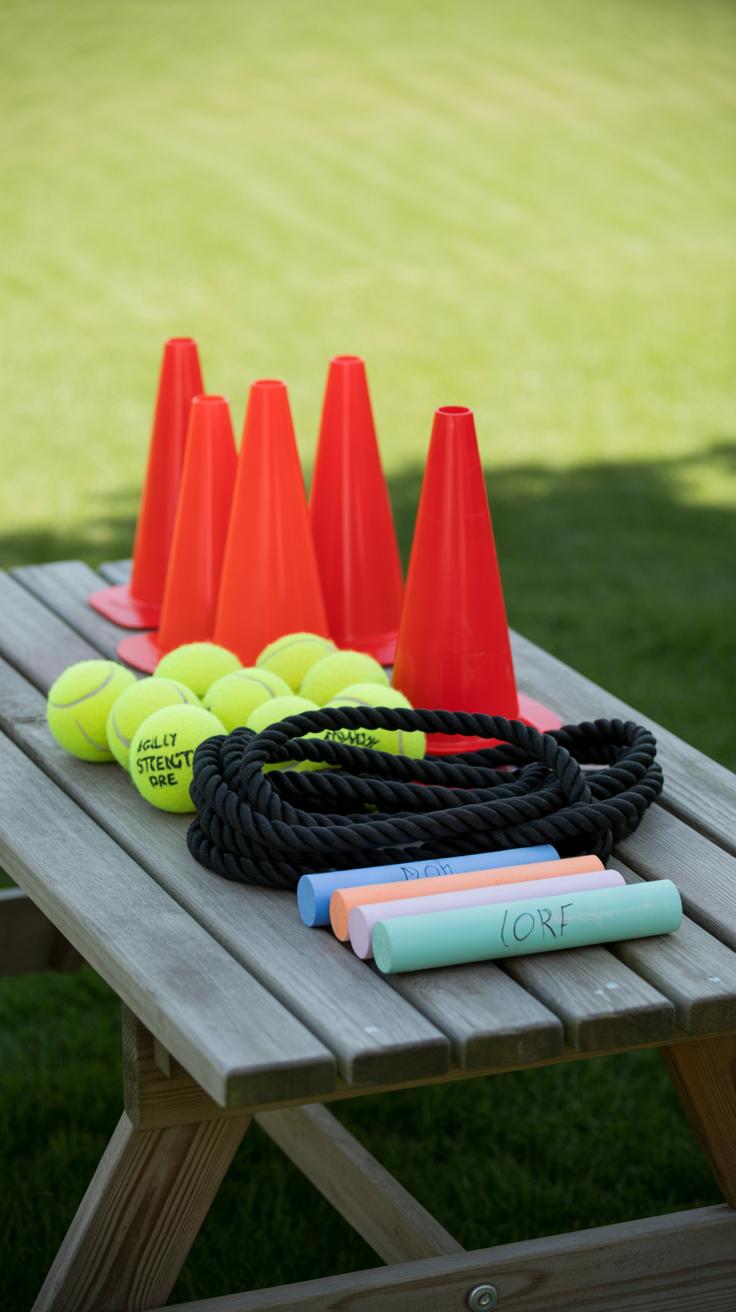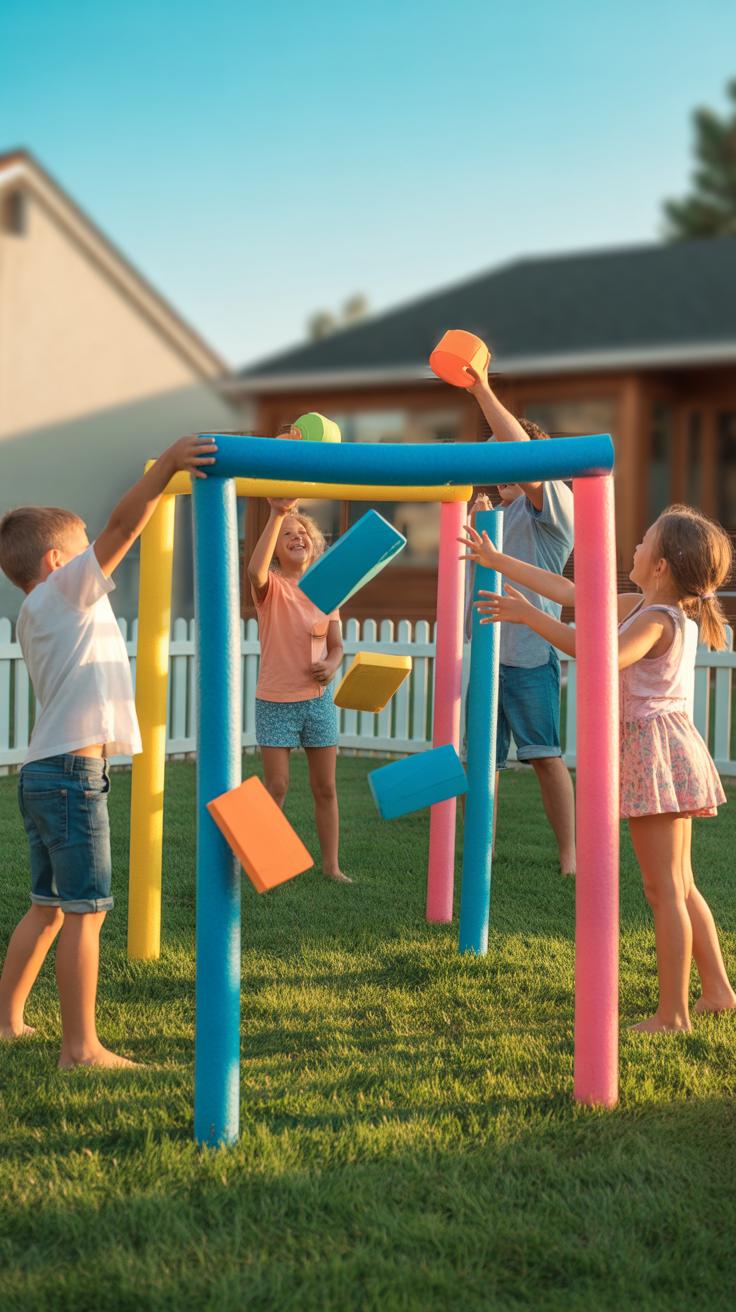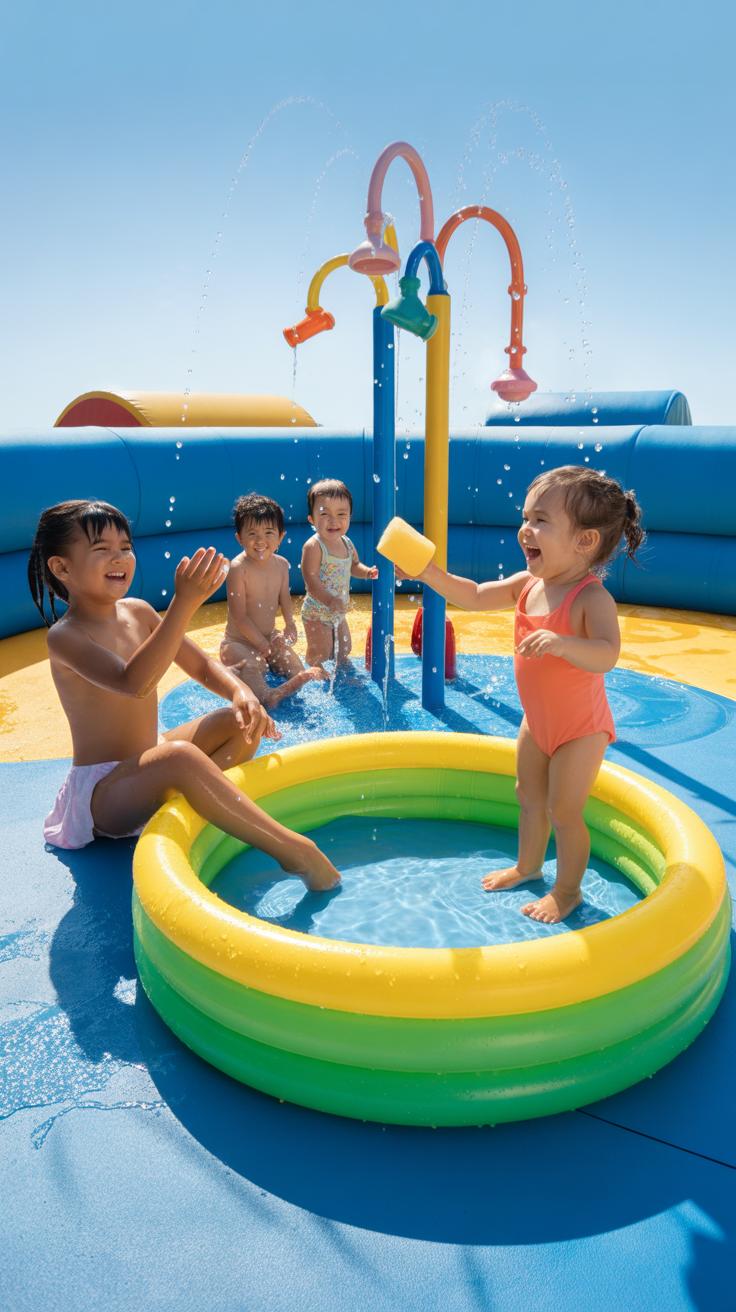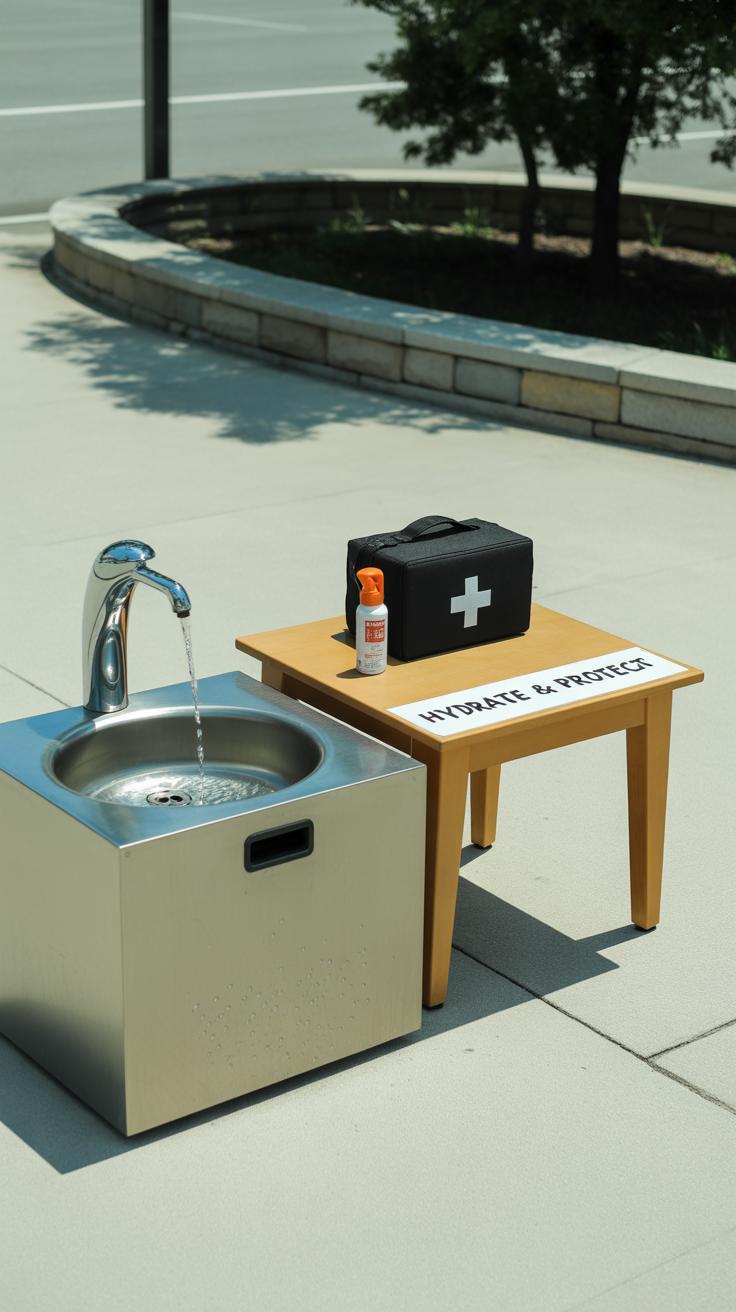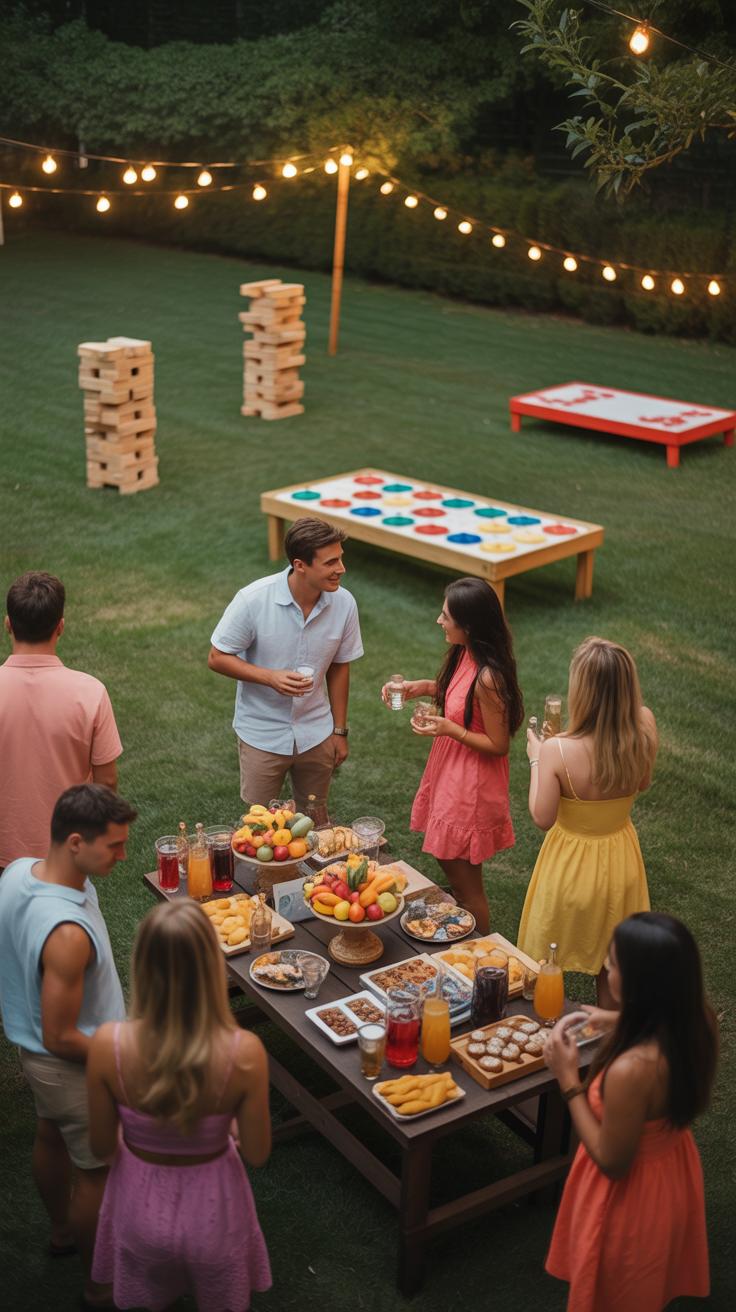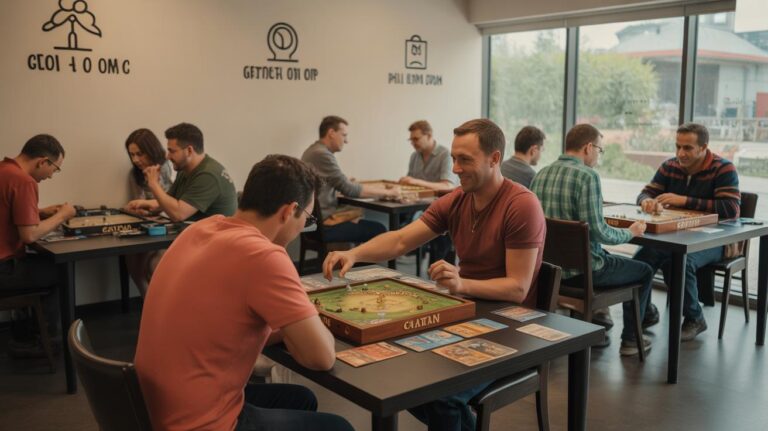Introduction
Summer is the perfect time to enjoy outdoor activities with family and friends. Backyard games make the warm days more entertaining and bring everyone together. Whether you have a big group or just a few people, simple games can turn any backyard into a place full of laughter and joy.
This article will guide you through different fun games you can play outside during summer. You will learn practical ideas, how to involve all ages, and ways to keep the game time safe and exciting. Let’s get your backyard ready for some summer fun!
Simple Equipment Needed For Backyard Games
When setting up backyard games, you don’t need fancy gear or complicated sets. Often, simple equipment like balls, ropes, and cones can create hours of fun. A softball, a soccer ball, or even a bouncy ball will do for many games. Jump ropes or long pieces of rope come in handy for tug-of-war or skipping challenges.
Cones—or what you use as markers—can really help define playing areas. You might not have official cones, but small objects like water bottles or shoes can work just fine if you place them thoughtfully. Sometimes improvised gear turns out to be more creative, and that adds a bit of charm to the whole event. Anyone else feel like household items often spark the best games?
For instance, you can use plastic cups stacked as targets for tossing games. Towels tied onto sticks or poles make simple flags for capture-the-flag style games. Buckets filled with a few small balls or bean bags become quick tossing targets. The trick is to think about what nearby things might easily fit a game’s purpose. It doesn’t have to be perfect.
As for buying equipment, dollar stores are surprisingly great spots to check out. You can find jump ropes, frisbees, cones, and even inexpensive balls there. Sometimes it’s more fun to mix store-bought items with homemade sets. For example, cutout cardboard shapes or painted rocks can serve as game pieces. Do you think mixing bought and DIY equipment changes the vibe of a game? For me, it usually makes things feel more personal and inviting.
Classic Backyard Games For All Ages
Some games just stick around because they work for everyone, no matter the age. Take tag, for instance. You don’t need anything but a bit of space and willing players. It’s fast, simple, and kids love chasing each other, but teens and adults often jump in, making it surprisingly fun across generations. Sack races are another classic: all you need are some old pillowcases or big bags. They get people laughing, stumbling, and competing in a way that feels both silly and thrilling.
Relay races blend speed with teamwork and can be tailored to different ages by adjusting distance or the tasks involved. Once, I tried a relay involving a mix of running, balancing a small ball, and hopping—it became chaotic but really brought the group together. These games are easy to set up and break down, making them perfect fillers between more involved activities.
Games Kids Love To Play
Kids often prefer games where they can disappear and peek out, so hide and seek stays a top choice. It uses the backyard’s nooks and crannies, turning ordinary spaces into a playground of possibilities. Jump rope challenges appeal too—they push kids to improve their timing and coordination. Maybe you’ve seen kids competing to count how many jumps they can do straight—sometimes they quit and start over, which is part of the charm.
Water balloon tosses bring in a splash of excitement and a bit of unpredictability. They keep kids active and often end with everyone soaked but smiling. The game is simple: a balloon passes between partners, further and further apart until one drops it. It’s a perfect way to cool off, and you might find even usually shy kids join in, getting a little messy and forgetting everything else for a while.
Games For The Whole Family
Games that bring everyone together are special, especially when they encourage cooperation rather than competition alone. Three-legged races force players to sync their steps both physically and mentally—which can bring out a surprising amount of laughter and frustration. It’s a game where parents and kids need to communicate, and sometimes that’s the best part.
Egg-and-spoon contests balance skill and calm nerves. Watching a grandparent and a toddler both focus on keeping their egg steady is oddly touching and fun. These games don’t require any skill level, just a bit of patience and willingness to try. They invite everyone to participate at their own pace and still feel included, which actually makes the backyard feel a little smaller and warmer all at once.
Setting Up Team Games In Your Backyard
Organizing team games like backyard baseball or basketball variations takes a bit of planning but often turns out better than expected. You start by figuring out how many players you have and then splitting them into teams that balance skill and age. It’s tricky sometimes—like when a younger kid feels outmatched or an adult unintentionally dominates the play. To keep it fair, you might adjust rules or even mix up positions so everyone gets a chance without feeling left out.
For example, with backyard baseball, shorter innings or “tapping” instead of running full bases can help younger players. Basketball can be casual with no scorekeeping, maybe just a first-to-ten-points rule with rotating shooters. These tweaks make the game flexible for friends and family of different skill levels.
Organizing Teams and Rules
Teams should be as balanced as possible. You can ask participants about their experience beforehand or observe their skills briefly. Here are a few ways to organize teams well:
- Group by age brackets but mix skill levels within each group.
- Use a draft system where team captains pick players evenly.
- Rotate players through positions often to keep things fresh.
- Simplify or scale rules—like smaller goals or shorter game times—to match the youngest or least experienced players.
It’s okay if rules feel a little loose; backyard games are not official matches, so flexibility helps keep everyone engaged.
Encouraging Fair Play and Fun
Keeping things fair means more than just following rules. It’s about attitudes too. I’ve seen games where someone seemed to bend rules, yet everyone laughed it off and moved on. That spirit is important.
Encourage positive comments, celebrate small wins for every player, and remind everyone that enjoying the game matters just as much as winning. If a disagreement arises, stepping back and resetting expectations can calm things down. Sometimes, pausing for a short break and sharing a funny story helps cool competitive edges.
What kind of team spirit do you want in your backyard? Maybe ask players what they enjoy most—sometimes cooperation matters more than scoring points. When everyone feels included and respected, the games tend to end with smiles, not grudges.
Creative Game Ideas To Try This Summer
Obstacle Courses For Skill and Speed
Setting up an obstacle course in your backyard can be simpler than you might think. You don’t need fancy equipment. Chairs, ropes, buckets, and even sticks can create a fun and challenging course. Try mixing physical moves with little puzzles—like hopping over a row of cushions, crawling under a table, then solving a quick riddle before running to the next station. It adds a mental twist that keeps players thinking while moving.
Natural elements work well too. Trees become markers to zig-zag around, a garden hose can mark a balance beam, or flower pots serve as stepping stones. The key is variety—jumping, ducking, balancing, and problem-solving to keep things fresh. If you have young kids and teens playing together, you might need to adjust the difficulty or break up parts so everyone feels challenged but not overwhelmed.
Scavenger Hunts To Explore Your Outdoors
Scavenger hunts offer a great excuse to look closely at your yard or nearby outdoor space. You can tailor them to be simple or more involved, depending on who’s playing and how much time you want to spend. Try creating a list that mixes common items with more unusual finds or clues that require some thought—like a leaf shaped like a heart, a smooth stone, or signs of animal life.
For a quieter hunt, use photos or riddles as hints instead of just naming items. This nudges players to interact with their surroundings, noticing colors, textures, or sounds they might usually overlook. Don’t hesitate to get a little competitive, or keep things casual. Sometimes, watching players get excited over the smallest discovery can be surprisingly rewarding. Have you ever noticed how a scavenger hunt can turn the backyard into a whole adventure?
Water Games To Cool Off On Hot Days
When the sun becomes relentless, backyard water games offer a perfect way to cool off and keep the energy high. Water balloon fights remain a classic choice, but there’s something about the chaos of a mid-afternoon balloon burst that never gets old. A simple toss can turn into an all-out splash fest, especially when teams form and strategies come into play—just don’t underestimate the clean-up after.
Sprinkler runs bring a different kind of fun, mixing bursts of laughter with quick dashes as kids try to weave through the spray. It’s also great for toddlers who might be wary of the sudden splash; the slow, steady mist feels welcoming rather than overwhelming.
Sponge relays add a twist, with players soaking up water and racing to squeeze it out at a target or into a bucket. This one’s good for encouraging teamwork and focus—plus, it’s quieter chaos compared to balloon fights.
Fun Water Games For Kids
For younger children, simplicity helps. Water games that need minimal setup means less waiting, which is key for keeping their attention. Think about filling shallow tubs with water for “fishing” games using toy rods or floating balls. Kids move, splash, and stay hydrated, all under watchful eyes.
Spray bottles also find new roles in these games. Kids can spray targets, chase water trails, or even play tag with tiny bursts of water—low stress, easy to clean, and very safe.
Safety often creeps in here, too. Keeping water play shallow and on soft grass cuts down slipping risks. And honestly, having a dry towel within reach tends to prevent many pouty moments or rushed exits.
Water Games For Everyone
Water games don’t have to be just for kids. Large groups can enjoy splashy activities that encourage cooperation and laughter alike. Try water balloon dodgeball with teams, where players must work together to stay dry—or at least avoid getting soaked first. It’s chaotic but fun for all ages.
Another option is a relay involving passing water via sponges or cups, forcing everyone to coordinate. And when adults join in, those moments always spark unexpected joy and a little surprise competitiveness.
What makes these games stick is that they break age barriers and invite everyone outside, often cooling tempers as well as bodies. In your backyard, some water and a few simple items can bring smiles that last past sunset.
How To Make Backyard Games Safe
When you’re setting up games outside, safety should be on your mind from the start. Space matters—a cramped area can quickly turn into a hazard zone. I usually measure out where kids can run or throw balls without crashing into flower pots or fences. It’s better to use open spots, even if it means moving some garden furniture temporarily.
Supervision is crucial, though. Even the simplest game can get out of hand if no one’s paying attention. Just being nearby and watching closely can stop accidents before they happen. Sometimes, I’ve found that explaining the rules clearly—like no pushing or running too fast—helps calm the energy. Keeping rules straightforward makes it easier for everyone to remember what’s okay and what’s not.
As for equipment, pick things that won’t hurt if someone trips or gets hit. Soft balls, plastic bats, or light frisbees usually work. Sharp or heavy toys? Maybe skip those. It’s tempting to add every cool toy, but I’ve learned that less risky gear keeps the vibe more relaxed and less stressful for the grown-ups, too.
Creating A Safe Play Area
Before the first game, walk through your yard carefully. Look for anything that might cause trouble—rocks, sticks, uneven ground, or garden tools left out. Clearing those out makes a big difference. I once missed a small hole by the shed, and guess what? A twisted ankle later, I never skip that check again.
Setting clear boundaries is helpful, especially for younger kids. Use cones, ropes, or just natural markers like flower beds to mark where the game happens. It helps contain the excitement without chaos spreading into parts that aren’t kid-friendly or that could get damaged.
Supervising And Setting Rules
Adults don’t need to hover constantly, but keeping an eye on things does matter. I try to be deliberate about when to jump in and when to let kids settle minor disagreements themselves. It teaches them a bit about responsibility, but also keeps things from escalating.
Rules should be simple and repeated before each game starts. Something like, “No running near the fence” or “Take turns throwing”—short and clear. Kids need reminders, and adults sometimes forget themselves. Having the rules written down or posted can help, especially when there’s a mix of younger and older children playing.
In the end, safety means planning ahead but also staying flexible when things change mid-game. If a toy breaks or play gets too rough, it’s okay to pause and adjust. The goal is fun, after all, but without unnecessary risks.
Including Everyone In Your Summer Games
One of the trickiest parts about backyard games is making sure everyone can join in. Different ages and abilities mean you might need to tweak things a bit. Sometimes it’s as simple as adjusting the equipment. For example, use lighter balls or bigger targets for younger kids or those who may not have the same dexterity. Bigger or slower-paced games can work well, too.
Rules can be adjusted without losing the fun. You could have shorter rounds or allow extra tries for younger players. I once played a simple tossing game where little ones stood closer, but older kids had to move further back. That way, no one felt left out or bored.
When it comes to skill levels, mixing teams is a great way to balance things. Pair up someone more experienced with a beginner and watch how encouragement spreads naturally. When you focus more on having fun than winning, the pressure eases. You might even notice friendships forming, which is a bonus you didn’t expect.
Have you ever thought about how a game could be made easier or harder just by changing one small thing? Maybe that’s a good place to start when planning your next backyard activity.
Planning Backyard Game Events And Parties
When you decide to host a backyard game day or party, a little planning goes a long way. Start by sending out invitations early—whether digital or printed—so guests can save the date. Don’t overcomplicate the invite; keep it informal and clear about the activities planned and what to bring, if anything. Sometimes a simple group message works just as well.
Creating a schedule for the day helps keep things moving smoothly. Think about alternating game sessions with breaks to prevent anyone from feeling overwhelmed or tired. Plan different types of games throughout the day—active ones to get energy out, and quieter ones for rest periods. It’s okay if the timing isn’t precise; flexibility often makes for the best days.
Food and drinks are key to keeping spirits and energy high outdoors. Opt for light, refreshing options that don’t spoil easily in the sun. Think finger foods like sliced fruit, veggie sticks with dip, and easy sandwiches. For drinks, iced water with lemon, fruity iced teas, or simple homemade lemonade do well. Avoid anything that requires a lot of fuss or constant refrigeration.
Don’t forget seating or shaded areas where people can relax between games and snacks. A small canopy or umbrellas can help. And, well, maybe plan a little extra food and drink—guests often get more hungry than expected when they’re running around. It’s better to have leftovers than hungry, restless friends, right?
Conclusions
Backyard summer games bring joy and connection to everyone involved. By choosing games that suit your space and group, you can make unforgettable memories without going far from home. The right games keep all ages active and happy while encouraging teamwork and friendly competition.
Now that you have ideas and tips for hosting backyard games, consider what you enjoy most and adapt the games to fit your setting. Enjoy the sunny days by turning your backyard into your summer playground filled with fun and smiles.


